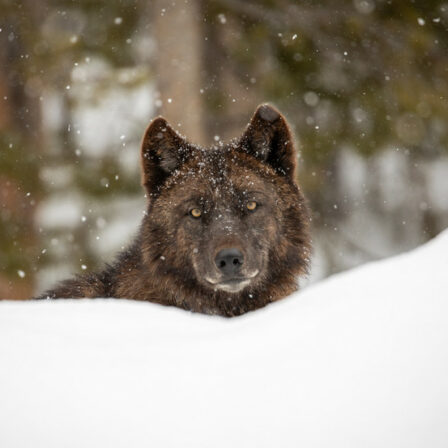Professor Emeritus, Department of Biology San Francisco State University
The Carrizo Plain in central California can seem rather absent of life on a hot summer day, but at night it becomes alive with nocturnal animals. If you are lucky, you may see the giant kangaroo rat (Dipodomys ingens) scurrying across the road. Better yet, take a walk across the grassy terrain and look for these rodents “dancing in the moonlight,” as they were once described by a biologist who studied them in the 1930s, when they were very abundant. More likely, you will see them stuffing seeds, their main food source, into their external cheek pouches and carrying the treasure into their burrows. Inside the burrow you may hear a strange thumping sound as the bipedal kangaroo rat drums its large hind feet to notify you that you are in its territory, where it stores and defends its seed larder. The foot drumming is an important part of their communication system, which they use to communicate identity and territorial ownership to other kangaroo rats and predator defense against snakes and kit foxes.[pullquote]I celebrate the 40th anniversary of the Endangered Species Act because it has been important to the survival of kangaroo rats, but its job is not done.[/pullquote]
Kangaroo rats are arid-adapted rodents inhabiting deserts and dry grasslands of the southwestern United States and northern Mexico. Of the twenty species in the genus Dipodomys, thirteen live in California, and six species are either threatened or endangered, mainly because of habitat loss to agricultural and urban development. The giant kangaroo rat makes its last stand in the Carrizo Plain National Monument, where it is down to only 2 percent of its former population. The species is listed as endangered by both the California Department of Fish and Game and the U.S. Fish and Wildlife Service. These cute rodents are crucial for maintaining biological diversity. As a keystone species, they are food for the endangered San Joaquin kit fox and owls, and their extensive burrow systems provide a home for many other animals.
I celebrate the 40th anniversary of the Endangered Species Act because it has been important to the survival of kangaroo rats, but its job is not done. During over thirty years of studying the behavior and ecology of eight different species of kangaroo rats, I have observed the continued decline of their populations. New threats to survival consist of the installation of vast arrays of solar panels in their desert habitats and the threat of oil and gas development in Central California. Urban and agricultural development continues to endanger kangaroo rat species.
I invite you to go into the desert at night to see these beautiful little rodents in their natural habitat. You can look for them hopping along on their hind legs in the moonlight, and then go home and support the Endangered Species Act.


